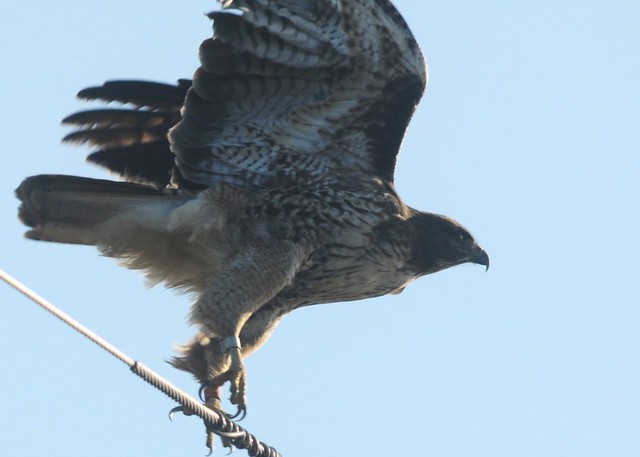We humans, by nature have generous souls. We want to help others and the world be a
better place. As Colorado Gives day, on
December 9th brings financial charity into focus, we all look at where our
money should go. Most of us are working
with limited finances. We want what
money we have allotted to giving to go to a place that it will make the most
impact. With governments loosing funding
for different services, more and more non-profits are taking up the task to
provide those services. That leaves us with the difficult decision of surfing
through thousands of those non-profits to figure out where we should place our
money; where it is used wisely and will make the biggest difference.
What will that difference be when you donate to the Rocky
Mountain Raptor Program? That
difference, no matter what amount, is huge.
All funds coming into the RMRP are managed very carefully so that
nothing is wasted. Your money makes it
possible to save and inspire lives.
 Your money will make it possible for a child to see a Great
Horned Owl up close and learn how it can turn its head around backwards and
look over its shoulder. Your money will
make it possible for a hawk, hit by a car, painful and starving, to receive
comfort and the chance to once again touch the skies. Your money will make it possible for the RMRP
staff to talk with landowners, to educate and to help them figure out how to
leave that hay stack in place until the nest within it of 6 baby barn owls has
grown up and fledged. Your money will
help the RMRP run that lead test, measure that wing length, submit that blood
sample for West-Nile virus testing so that we can continue to contribute to
scientific pools of data on raptors, how they live and survive.
Your money will make it possible for a child to see a Great
Horned Owl up close and learn how it can turn its head around backwards and
look over its shoulder. Your money will
make it possible for a hawk, hit by a car, painful and starving, to receive
comfort and the chance to once again touch the skies. Your money will make it possible for the RMRP
staff to talk with landowners, to educate and to help them figure out how to
leave that hay stack in place until the nest within it of 6 baby barn owls has
grown up and fledged. Your money will
help the RMRP run that lead test, measure that wing length, submit that blood
sample for West-Nile virus testing so that we can continue to contribute to
scientific pools of data on raptors, how they live and survive.
But most importantly, your money will keep our doors
open. Open for You; so that when you
find an injured falcon, you have someplace to bring it to so it can receive
compassion and care. Open for You; so that when you need to remember our world
isn’t only traffic, cell phones, bad news and strife, there is a place where
wildlife and the wonders of nature are the focus. Open for You; so that when your kids need to
get in touch with nature, that at times seems so distant, you can know that the
raptors are close and right in our own Fort Collins back yard.
I am writing this now because I feel so much passion for the
impact that the raptors have on the lives of anyone they touch. Yes, I am a staff member. I am not a writer; I mostly work behind the
scenes organizing stuff. But, here in my jammies, drinking coffee, on
my day off, I am still full of passion for the blessings I have received working
with these amazing raptors and all that the RMRP does for our world. I see it in the eyes of a child and adults
that sees these birds up close and discovers wonder and awe. Now, in our world so full of stress, we need
that wonder and awe and beauty of nature daily.
Your donation to the RMRP is such a great way to show your support for
that wonder that we all need. Your donation will make it possible to do so
much. No matter what the amount you
give, it makes a huge difference, every day, with every life that comes through
our doors, whether human or feathered.
Please consider allocating some of your charitable funds to the RMRP on Colorado
Gives Day.
Humbly submitted by my cat and I, Lisa Winta.
Humbly submitted by my cat and I, Lisa Winta.
You may also give at www.RMRP.org/donate

















